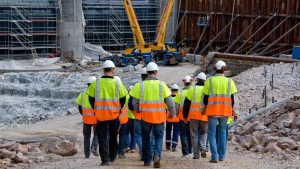Takeaways from HBI's Spring 2024 Labor Report
Originally Published by: Builder Online — June 7, 2024
SBCA appreciates your input; please email us if you have any comments or corrections to this article.
The construction labor shortage continues to rank as a top issue for home builders and data from the Home Builders Institute (HBI) shows the scope of the challenge facing the industry. According to the Spring 2024 HBI Construction Labor Market Report, the required amount of construction workers needed per year is 723,000. Over the course of 2024 to 2026, this represents a need for an additional 2.17 million adjusted net hires for the construction industry.

The report includes several high-level findings on the state of the construction labor market, demand projections, and trends:
Demand for construction weaker than 2020 to 2021, but still “solid.” Despite a “higher for longer” interest rate environment and slowing progress against inflation, demand for new construction remains solid, according to the HBI. Construction labor remains a top challenge for builders and a hurdle to delivering the needed housing inventory to potentially curb the shelter inflation component of overall inflation. As of February 2024, there were 456,000 open construction sector jobs, just slightly below the all-time high of 488,000 in December 2022.
Construction wages are increasing more than the private sector. As a reflection of the persistent long-term labor challenges, wages in construction are continuing to rise and are outpacing typical earnings in other industries. According to the Current Employment Statistics report from the Bureau of Labor Statistics (BLS), average hourly earnings in construction increased 5% since a year ago and approached the $38 mark in March 2024. The seasonally-adjusted hourly earnings in manufacturing were $33.60 and $29.90 in trade, transportation, and utilities; the private sector average hourly earnings were $34.70 in the same period.
Women represent a growing share of construction employment. The number of women in the industry increased to over 1.28 million, according to the most recent data, accounting for 10.9% of the construction workforce. As recently as 2017, women accounted for just 9.1% of construction industry jobs. According to the Current Population Survey, though, women in construction are mostly involved in jobs related to office and administrative support, management, business, and financial operations. Women accounted for only 4% of construction and maintenance occupations. The HBI identifies recruitment of women as an important element to combatting the ongoing skilled labor shortage in the construction industry.
Industry is still struggling to replace its aging workforce. The median age of workers in construction is 42, with the share of workers between the ages of 25 and 54 decreasing to 67.3% from 72% as recently as 2015. The share of workers in the industry older than 55 increased to 21.8%. However, an encouraging trend for the industry is that the share of workers under the age of 25 is increasing. According to the HBI, Gen Z is more likely to enter the construction industry than Millennials. Gen Z is drawn to the industry due to the innovative aspects of modern construction technologies, the high cost of college education, competitive wages, job security, and growth potential, according to the HBI.
The full Spring 2024 HBI Construction Labor Market Report is available here.
